Chronic Venous Insufficiency (CVI)
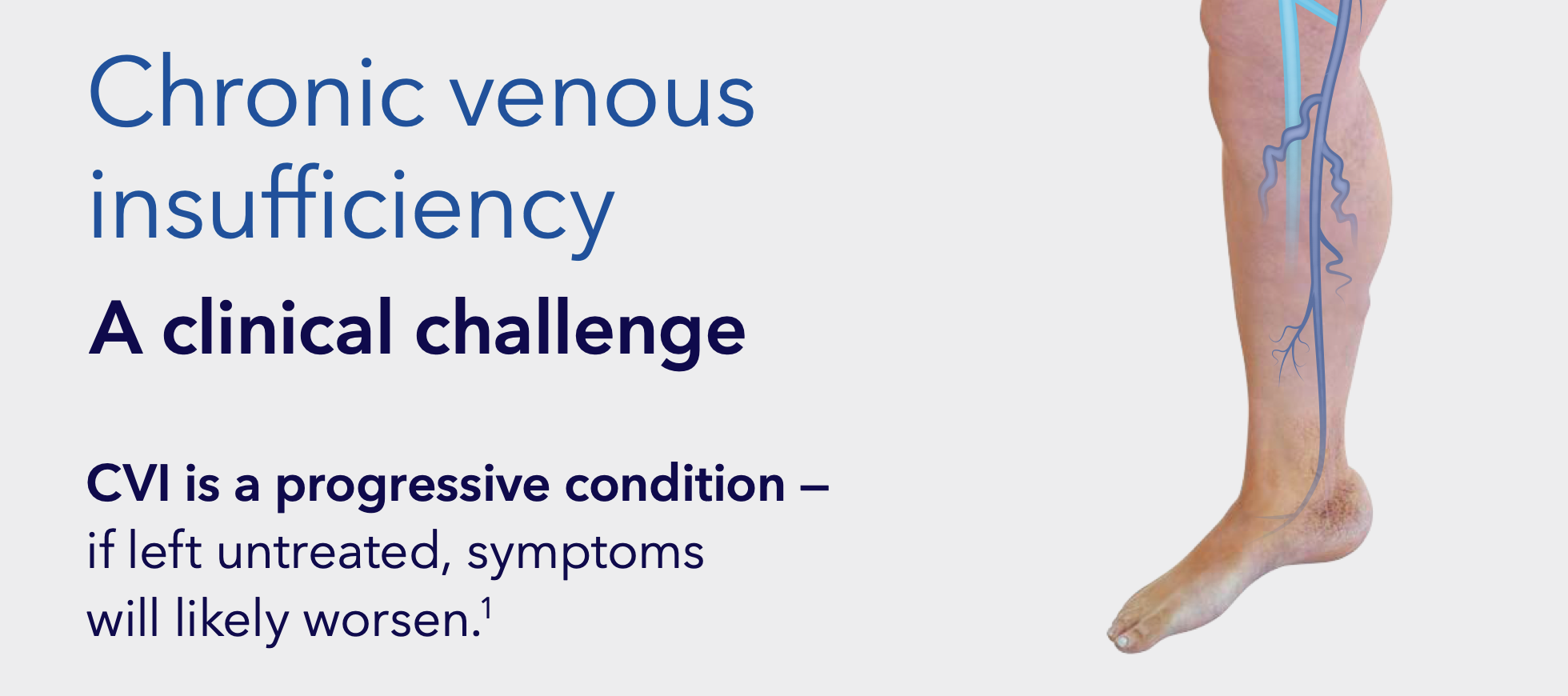
Understanding vein disease
Chronic venous insufficiency (CVI) and varicose veins are more common than you may think, affecting more than 30 million people in the United States.
What is venous disease?
Vein disease — also called venous disease or chronic venous insufficiency (CVI) — is a medical condition. It is recognized by Medicare, Medicaid, and private insurance carriers as a medical condition.
A clinical challenge
The vast majority of patients with CVI remain undiagnosed and untreated. It is estimated that people live with CVI for up to 35 years before seeking treatment.
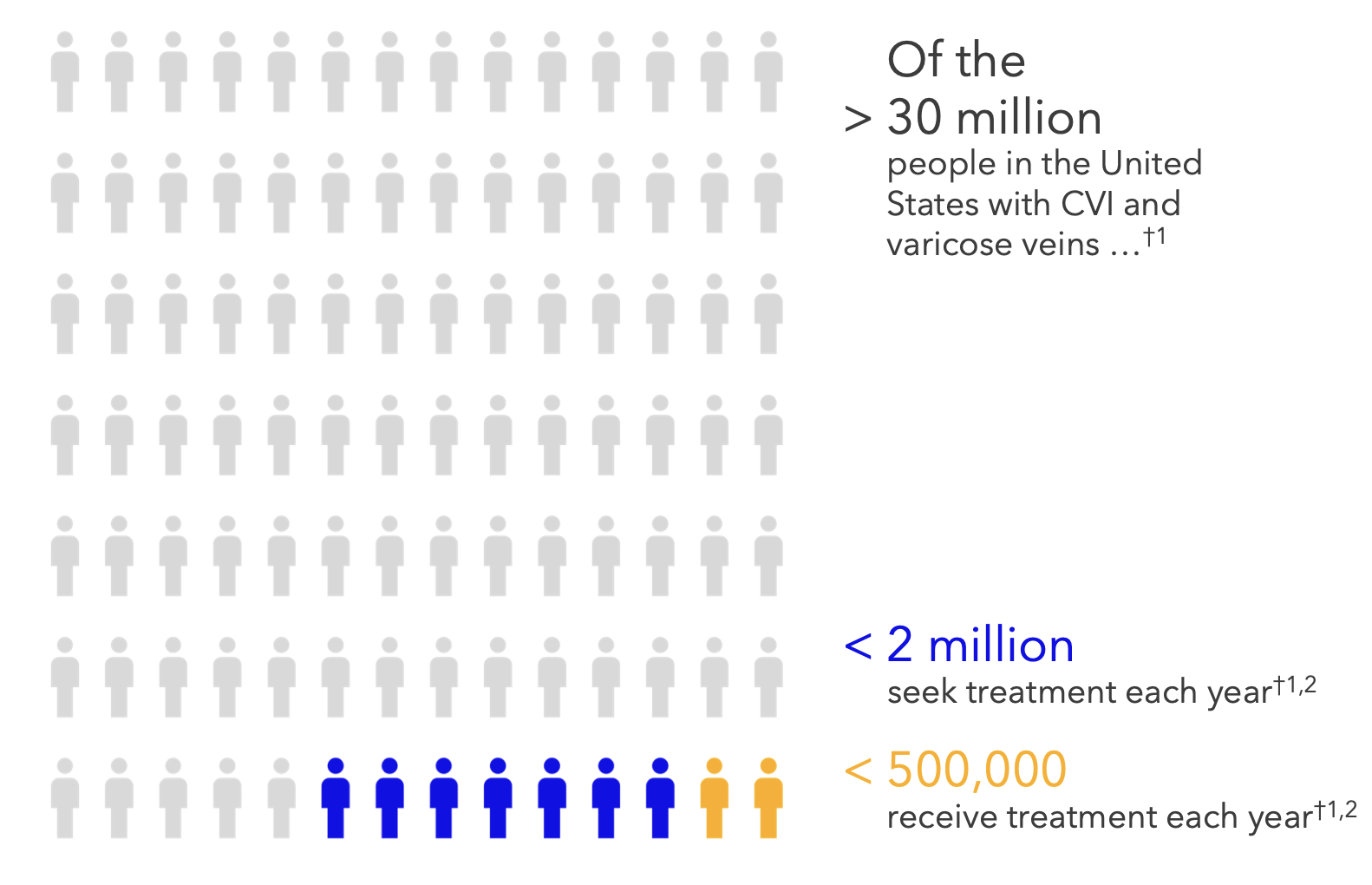
How did I get it?
Possible genetic risk factors:
- Gender: women are more likely to develop the disease
- PregnaFamily historyncy
Possible lifestyle risk factors
- Lack of exercise
- Leg injury or trauma
- Prolonged sitting or standing
- Obesity or excess weight
- Current or previous pregnancies
- Smoking
- Blood clot (deep vein thrombosis)
Prominent disease state comparison

Venous pathophysiology
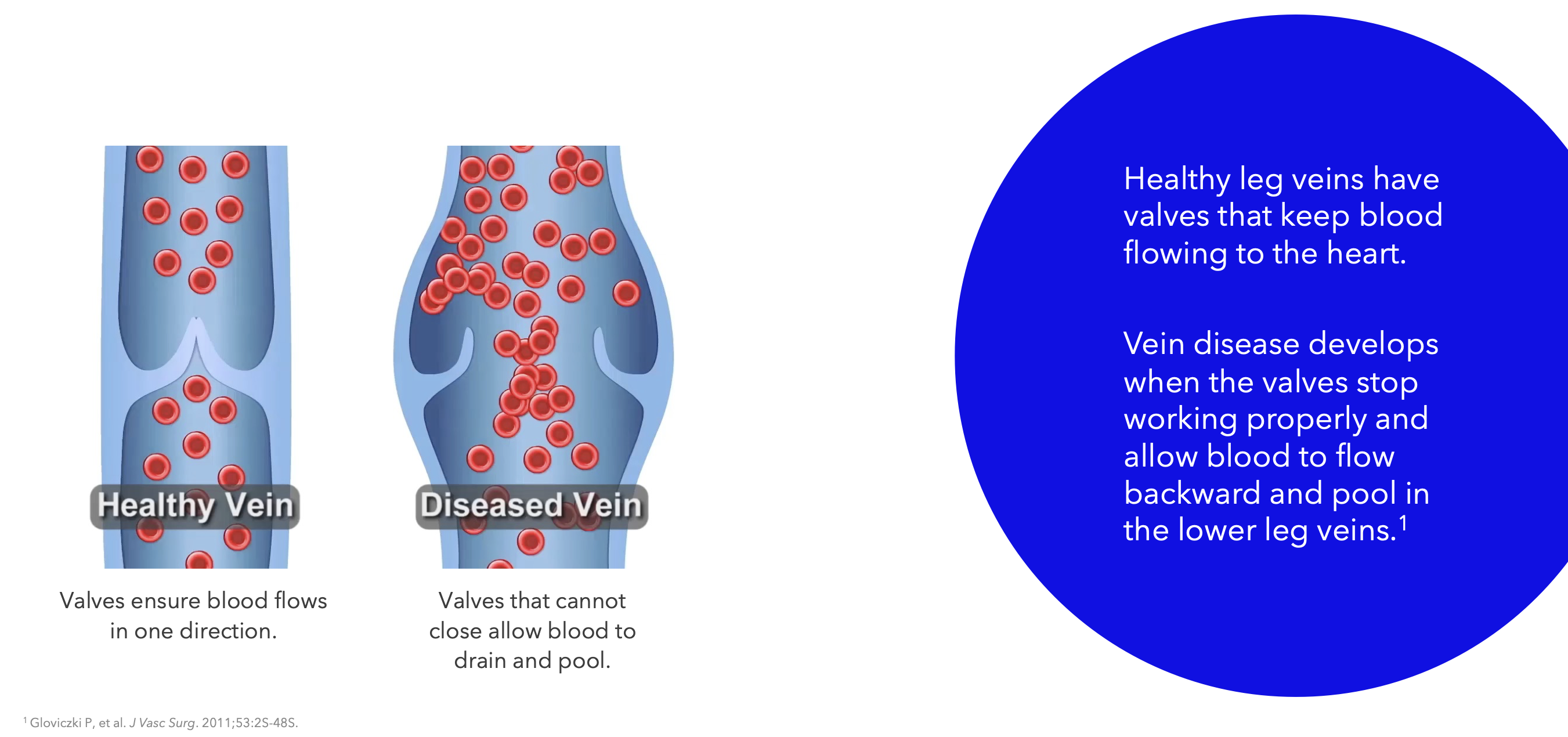
It’s more than just what you can see
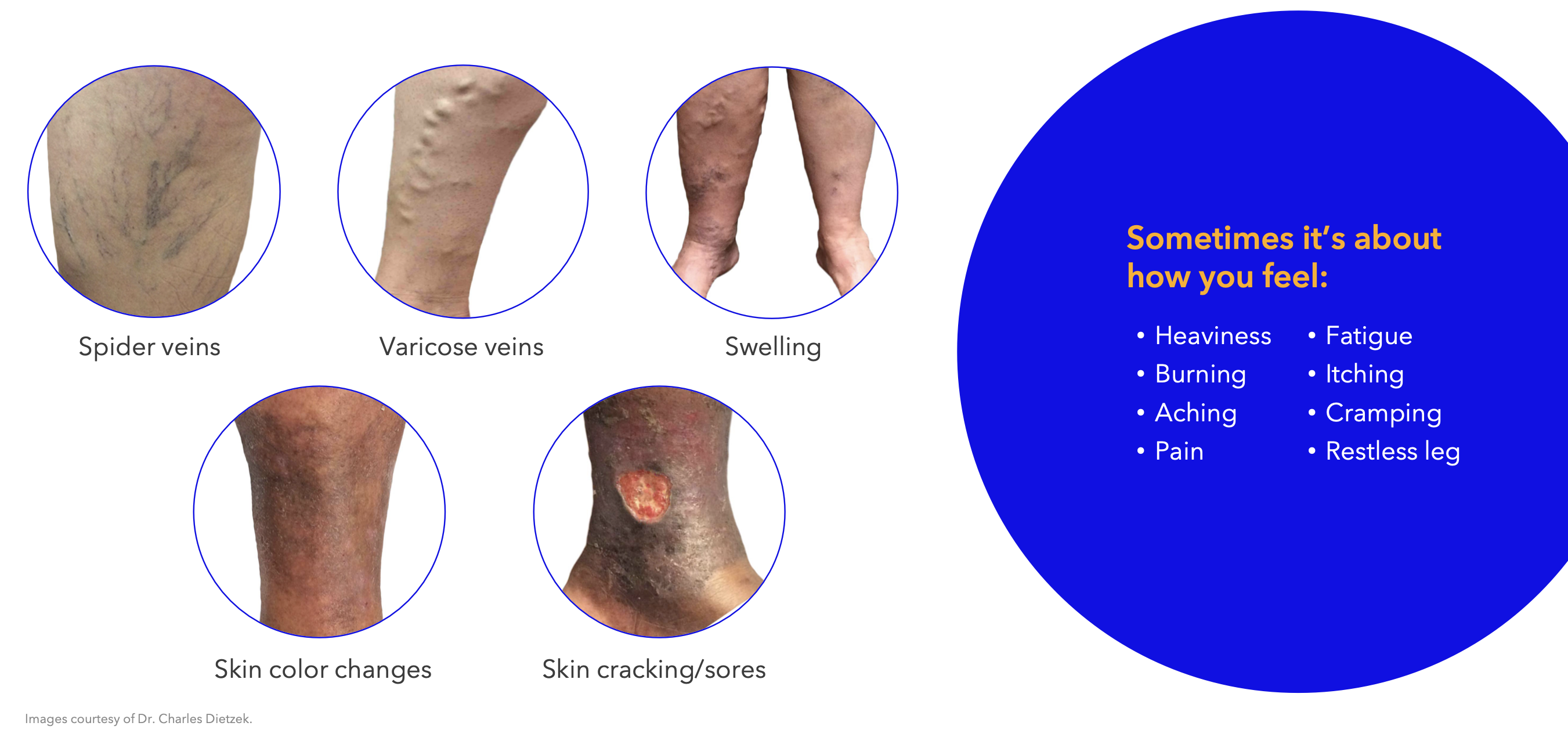
Advanced-stage disease
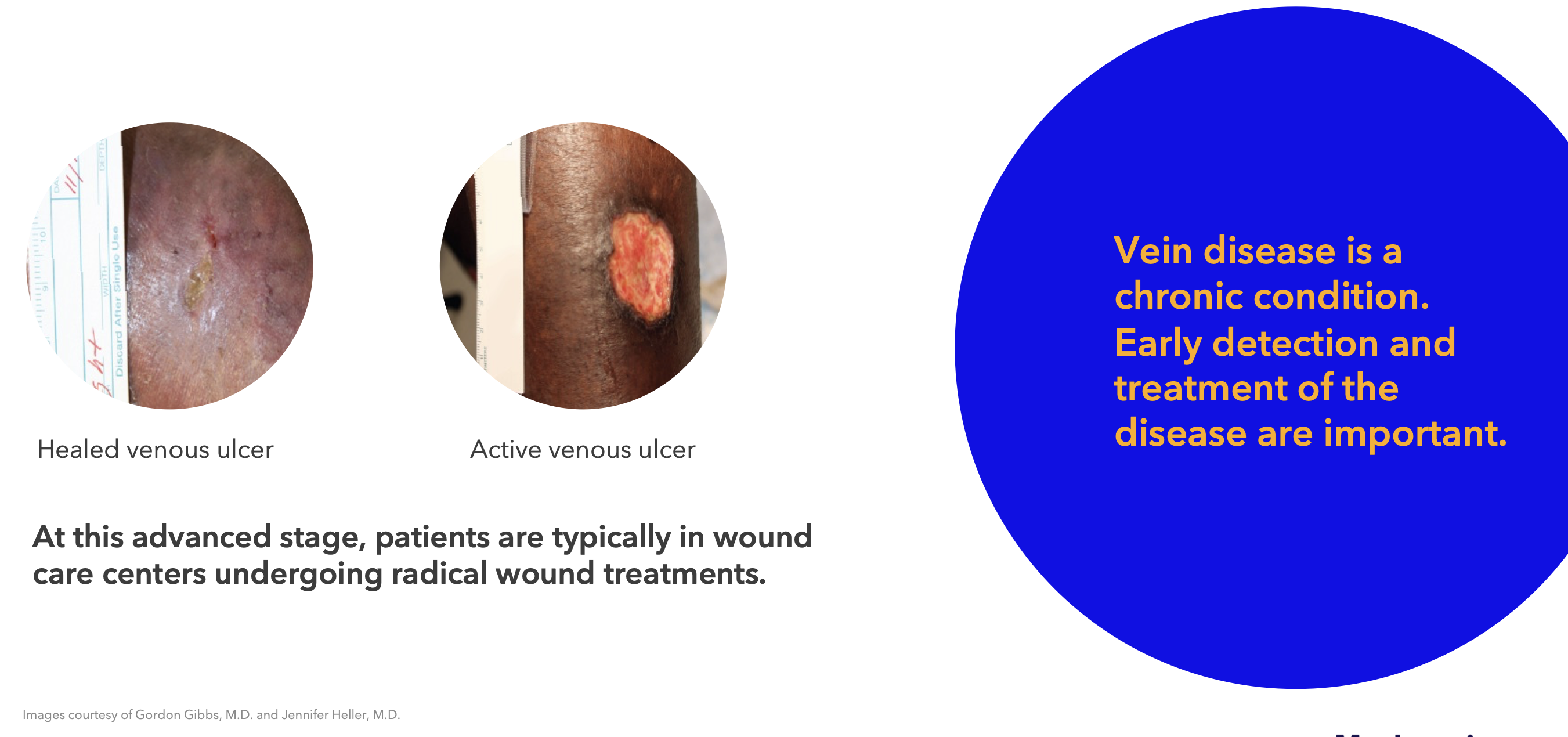
Advanced-stage disease
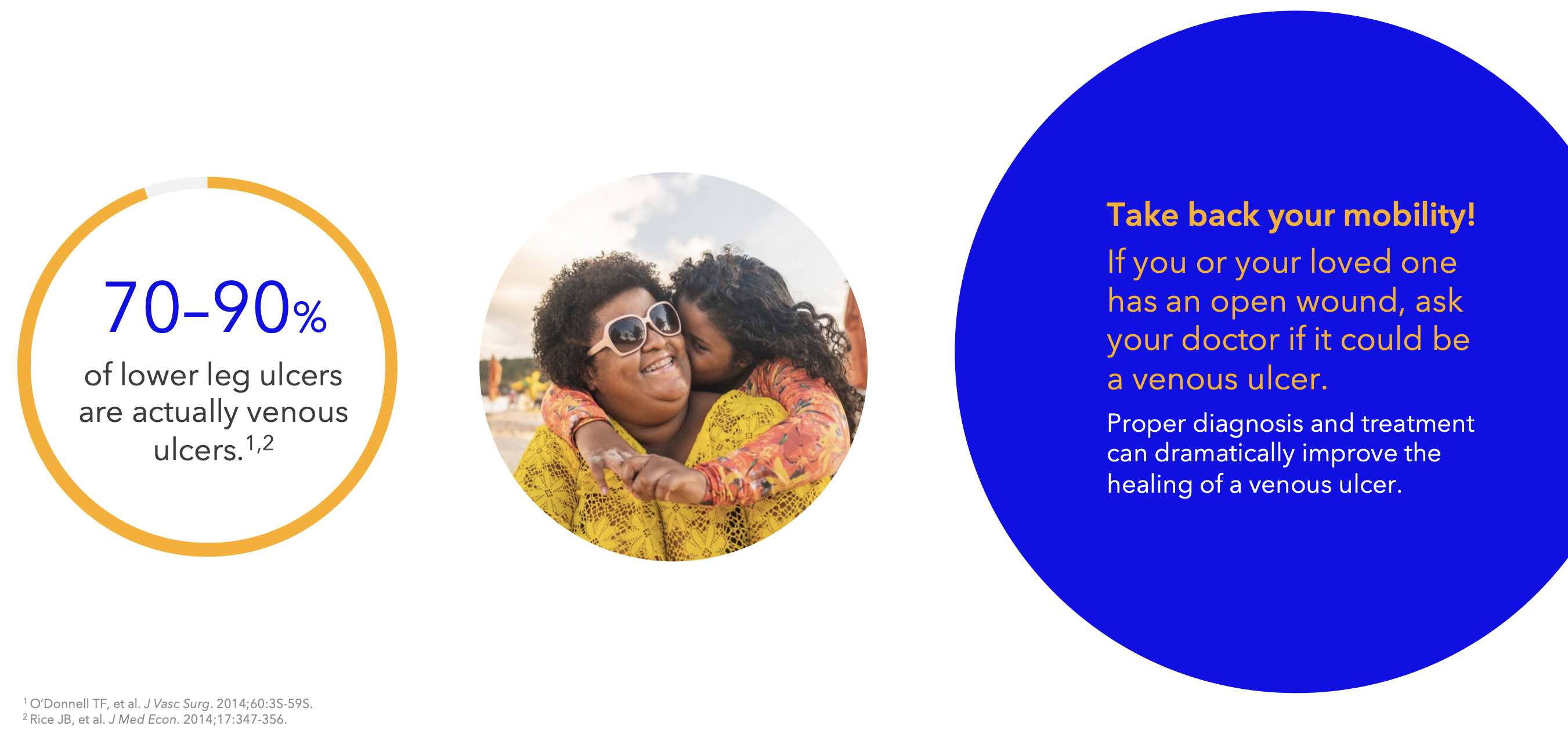
How to learn if you have vein disease
An ultrasound scan is the only definitive way to diagnose vein disease. A technician uses this test to get an image of the inside of your leg veins. A doctor will review the test results to determine if the valves inside the veins are working properly. Although insurance coverage varies by individual plan and the severity of disease, MOST insurance carriers, including Medicare, will cover necessary clinical tests (like an ultrasound test) that are done to help your doctor diagnose or rule out a suspected illness or condition.1 (Consult your insurance carrier for specific coverage rules.)
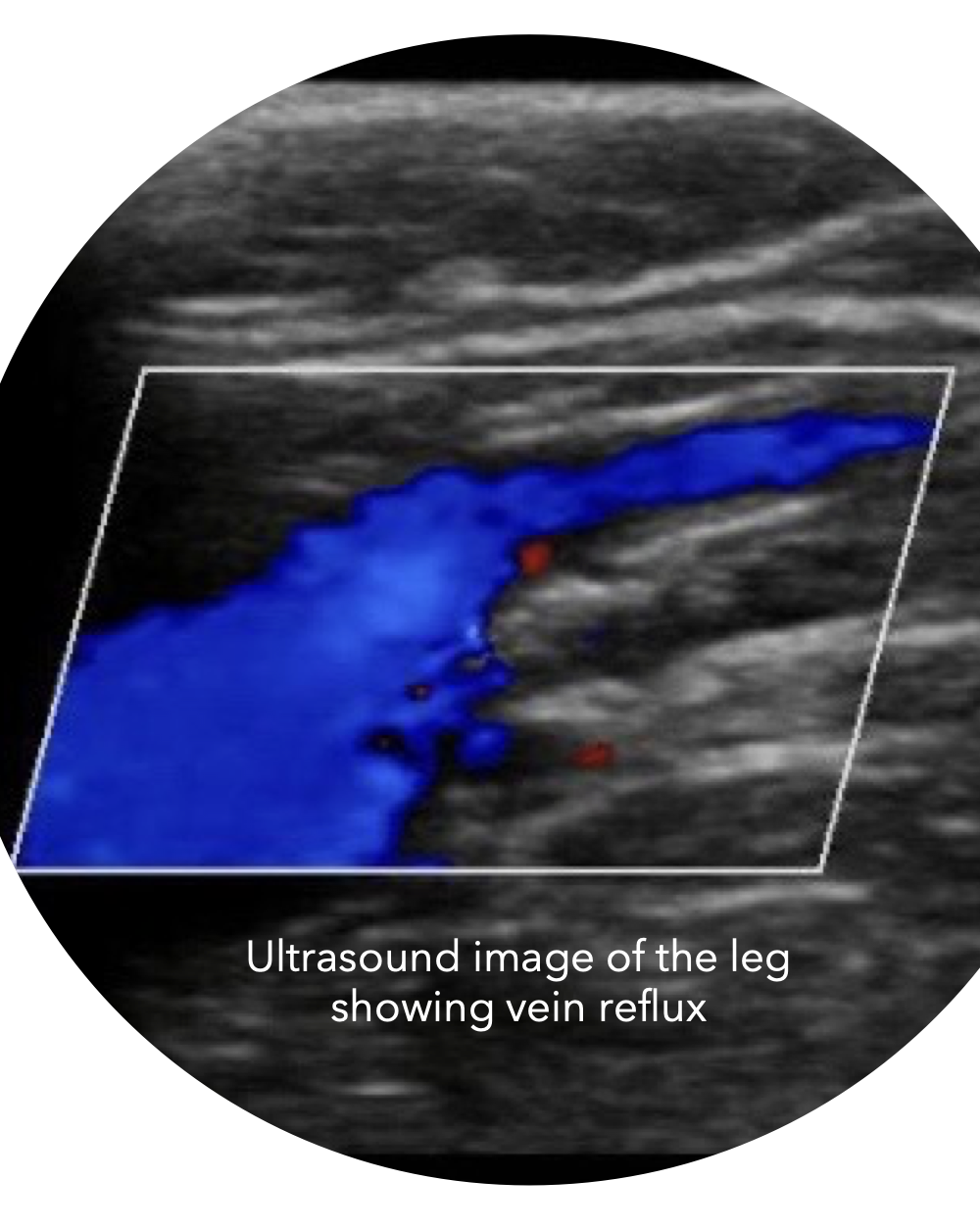
What can I do about it?
This disease is common — and treatable!
Your doctor will put together your treatment plan based on:
• Ultrasound test results
• A history and physical that focuses on your symptoms, family history, and lifestyle factors
Treatment options
Conservative therapies are required by insurance carriers. They can require up to three months of conservative therapies that show limited to no improvement to symptoms or quality of life before giving approval for additional/other treatment options. Examples: Exercise, leg elevation, compression stockings, over-the-counter anti-inflammatory medication, or Unna boot (for ulcers).
* Conservative measures may only offer temporary relief of symptoms.
* Compression stockings will not cure varicose veins, although they are effective in relieving symptoms caused by the condition and may reduce the risk of blood clots.
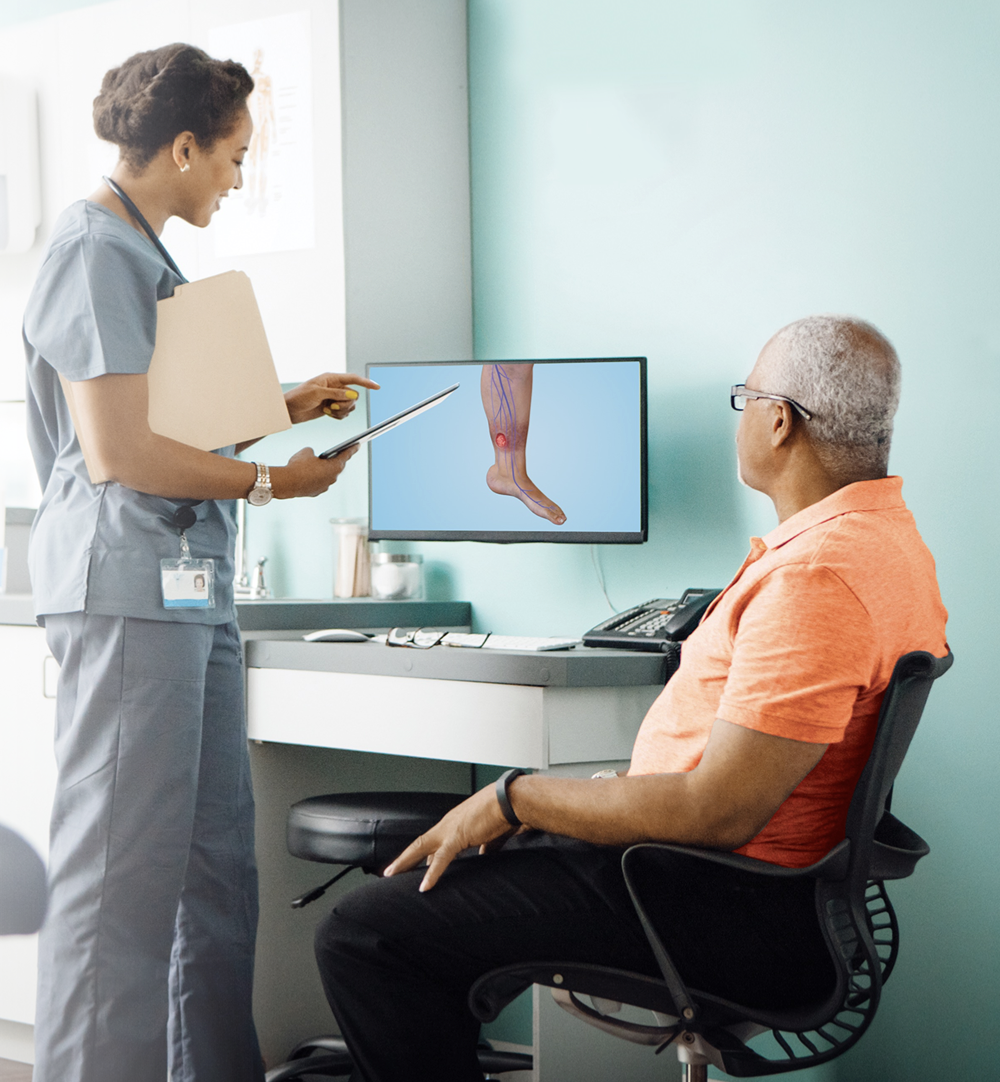
Treatment options for vein disease
Laser ablation
Numbing agent is given by multiple needle sticks down the leg, and heat is used to close the vein.
Mechanochemical ablation and foam sclerotherapy
No multiple needle sticks to give numbing agent down the leg, and heat is not used. Mechanical device is used to deliver the closure therapy to the vein.
ClosureFast™ radiofrequency ablation procedure
Numbing agent is given by multiple needle sticks down the leg, and heat is used to close the vein.
VenaSeal™ closure system
No heat, no multiple needle sticks to deliver numbing agent down the leg. Specially formulated medical adhesive is used to close the vein.
Frequently Asked Questions
CVI is a long-term condition where the veins in the legs do not allow blood to flow back to the heart efficiently. This leads to blood pooling in the legs, causing swelling, discomfort, and skin changes.
Return quickly to an active lifestyle!
